No plant can give you sweeter returns than fruit trees. The sweetest fruits are usually the ones picked at the peak of their ripeness. Think about plucking your own fruits from trees in your garden and devouring its sweetness with your family. There’s no denying that it’s the best fruit you would have ever tasted. All it takes is planting and caring for fruit trees in your garden. Here’s a simple guide to walk you through the procedures of growing your own fruit trees.
Why do you need to grow fruit trees?
These days you can easily grow your own fruits in the backyard orchard garden. Fruits that you get from your own garden are freshly packed with a lot of nutrients. They are better than the ones that travel several thousands of miles to reach your nearest grocery store. You could simply skip planting some visually pleasing, flowering plants for fruit trees.
When you have your own fruit trees, your children will be excited and help you with the gardening. They would also consume more fruits that they have helped grow. These fruits will also be healthy supplements because you would have grown them organically without using more pesticides. You can save a lot of your money that you spend at the grocery store and find a healthier alternative for your fruity needs. You also get to spend some time with nature and ultimately, it leads to a healthy life.
Picking the right fruit tree for your garden
Do you want to plant some fruit trees in your backyard or house garden? It’s not a tough job at all. All you need to know is a few gardening tactics. You might be worried about the complicated pruning, pollination groups, tricky pests, and more. But when you choose your fruit tree wisely, you can easily overcome these scary aspects and harvest your own fruits in the next fruiting season. Here’s a list of fruit trees you can consider planting in your garden:
Apple Tree
Apple is one of the most widely cultivated fruits around the world. They grow into small trees of about 5-12m tall and shed their leaves during the autumn months. Their flowers are normally white with a pink tinge and blossom during the spring. The fruits that come in various colors of red, green, and yellow ripen during late autumn.
They grow well in drained, fertile soil and can grow up to an altitude of 800 to 900 feet. It’s better to plant these saplings in the vicinity of bees for better pollination. These trees reach their full size in 8-10 years and can then produce fruits annually for up to 60 years. You can easily cultivate them through grafting a cutting from an existing tree or even germinated from the seeds. They can be grown in large pots, orchards, or in your back garden. You only have to space them in pairs so that they fertilize each other.
There are more than 7500 varieties of apples that are grown worldwide. U.S alone grows about 2500 varieties of them and is the second largest producers of apples next to China. There are many types of apples, like Red Delicious, Cortland, Fuji, Winesap, Gala, and more. These trees are a great addition to your garden and can yield you a lifetime full of fruits. All you need to do it regularly fertilize and prune them for making them grow in better shape.
Cherry Tree
Cherries are a great choice for your own fruit trees. They come in two different forms – the deliciously sweet, deep brown-red ones and the lightly sour bright red ones. Most of the cherry species originated from the Northern Hemisphere, but now they are being cultivated in more numbers in the eastern Asia, North America, and Europe.
Cherry trees require well-drained, deep, loamy soil for a healthier growth. They require cooler temperatures and can survive only when they receive more than 1000 hours of cold winds annually. They can’t withstand extreme cold or humid weather and these trees blossom during the late spring when the climate is still chill. It also requires bees for pollination and it’s better to plant them where there are enough bees around. You can also bring in bees into your cherry garden once they bloom at their fullest.
The trees can grow up to 11 meters and bear fruits that are fleshy heart-shaped drupes. They are about 1 inch in diameter and are collected when they are fully ripe. They start producing fruits during the fourth year and can generously yield up to 30 to 50 quarts of cherries every year. They come in different varieties of sour and sweet fruits, like Meteor, Early Richmond, Black Tartarian, Bing, and more.
Peach Tree
Peaches are sweet succulent fruits and belong to the rose family. They grow well in warmer regions of both the Southern and Northern hemispheres. They were originally cultivated in China and in the late 19th century reached the U.S. Presently California in U.S is the largest producer of peaches and accounts to about 37 % of the total peach production in the world. These plants require adequate sunlight and can only thrive in soil that had good drainage, and is deep and sandy. It requires loosen up soil because the roots can reach up to 3 feet under the ground.
These trees can reach 8-16 feet in height and bloom during the early spring. They grow very slowly and can reach only 4-5 feet in 10 years. They flower during the early months of February through April and needs bees for pollination. If you are growing them in large pots you can pollinate them easily be brushing their flowers. They can bear fruits from the third year and can produce fruits annually for about 20 – 25 years.
They can’t survive in severe cold and require moderate warmth for flowering. You can prune these trees annually to stop them from growing very tall and they require adequate care if present in your garden. Peaches come in thousands of varieties, like Halford, Elberta, Redhaven, and more. Italy, Spain, China, and the U.S are the major producers of peaches in the world.
Pear Tree
Pears are deciduous fruits that belong to the family of roses. They are cultivated in almost all the temperature-zone countries of both the southern and northern hemisphere. The common pear that we eat today originated in Europe. It is now cultivated in many regions, like Mexico, China, California, and more. Asia grows the most widely used pear variety called Bartlett.
They prefer moderate weather, well-drained soil conditions, and enough sunlight. The pear trees are commonly broad-headed and can grow up to 13 meters in height. The leaves are round or oval in shape and have a wedge-shaped base. The pear flowers are pink or white in color with five petals and require the aid of wind and insects for pollination. These blossoms are about 1 inch wide and give out conical fruits of yellow, green, or light red color. The fruit has a white, creamy flesh and is usually sweet.
The pear fruits harvested when they are still young because they continue to ripen even after they are removed from the trees. These plants start producing fruits on the 4th year and continue to produce fruits annually. They can survive up to 10 to 50 years, depending on the variety you have planted. The most commonly cultivated and used varieties of peaches are Bartlett, Coscia, Passe Crassane, and more.
Lemon Tree
Lemon is a small citrus fruit that grows on evergreen tree belonging to the family Rutaceae. Lime is known to have originated from India and spread across the New World sometime between 1751 and 1768. Lemon is known for its edible fruit that’s being widely used in almost all cuisines across the world. The tree grows upright with a few large branches spreading out. The leaves are light green in color, oval or oblong, and give out a citrus odor.
These subtropical plants grow well in regions that face the usual seasonal changes. They are very sensitive to cold and can’t be grown in extremely cold regions. These trees grow very well in temperatures between 26 – 28° C. They require well-drained soil that’s deep enough for adequate development of the roots. They require adequate sunlight and can even withstand drought conditions. Lemon trees can reach up to 20 feet in height, while some dwarf varieties grow up to 12 feet high.
These tropical trees have white flowers that are mildly fragrant and bloom anytime of the year, depending on their growing conditions. The fruits are oval and commonly green in color and turn yellow on ripening. Lemon trees produce fruits round the year, while most of the fruit crops that are cultivated for commercial purposes are harvested in winter or spring. They are ideal trees for your home garden and can bear fruits for up to 40 years. They come in different varieties, like Kaffir limes, Mexican limes, Limequats, and more.
Orange Tree
Orange is a citrus fruit belonging to the family Rutaceae. Oranges are known to have originated from Southeast Asia. The fruit was cultivated for its edible and medical uses as early as 2500 BC. During the 15th century, orange cultivation began in Europe. In the late 15th and early 16th century they were shipped to South America, which is now one of the greatest orange manufacturers in the world. These healthy citrus fruits have over 600 varieties and are found in the tropical and subtropical regions of the world.
Though oranges are well known as tropical fruits, they actually grow well in the subtropical environment. These trees grow well in temperature between 30 – 35° C and can’t withstand severe cold climates. Orange trees prefer well-drained and somewhat sandy soil. Their roots spread out into the soil and require adequate sun for their growth. Orange trees bloom during the spring and give rise to green colored fruits that ripen into orange or yellow fruits.
Oranges are evergreen trees and can reach up to 30 – 33 feet in height. The leaves are oval shaped and are alternately arranged on the branches. The blooms are white in color and give out a citrus odor. Each year around 70 million tons of oranges are produced and one-third of the total orange production is from Brazil. These trees can survive for as long as 50 years and produce fruits round the year. Oranges also come in many different varieties, like Mandarins, Satsuma, Mediterranean Mandarin, Naval Oranges, and more.
How to plant a fruit tree?
Are you all set to plant your own fruit tree? You need to learn about the planting conditions, soil, type of tree, and more before you can get down to the business. Each fruit tree will have different requirements. So you need to thoroughly research on the soil type and climatic conditions around you, before choosing the right tree for your home garden. Here’s a step-by-step guide to walk you through the procedures of planting a fruit tree:
Preparing the soil
Healthy soil is all you need to ensure the healthier growth of your plants. When the soil is in good condition there’s less need for pesticides and fertilizers. Once you choose the right spot for planting, you can loosen the soil by digging and start adding organic materials to it. You also need to check your soil composition by taking a soil test. Add a lot of organic matter, like compost, cow manure, shredded leaves, and more to the soil. This will make the soil a rich source of minerals and boost the growth of your fruit tree. You can start preparing the soil a few months before you plant the tree.
Digging the hole
Make sure that the hole you dig for planting is wide enough for the roots to be placed with ease. Make a deep hole for the roots to completely get inside the soil. Chip away the soil from the sides of your hole so that any compacted soil gets broken down completely. This will help the roots to penetrate deep and get attached to the soil easily. The hole you dig must be dependent on the type of root your tree has. Bare root trees would require a mound of soil inside the hole for holding on to it.
Placing the tree in the hole
You can place the fruit tree on the mound and spread its roots evenly. If you are transferring a tree from a pot to the soil make sure that you carefully remove the roots from the pot. A simple way is to hold the plant at the bottom of its stem and pull it out of the pot along with the soil in it. You can place the entire setup into the dug hole.
Backfill the hole
Backfilling the soil is not simply throwing back the dugout soil into the hole. It requires a lot of care and effort. Once you have placed the tree inside the hole, hold it upright and start backfilling the soil around its root balls. You need to frequently check if the trunk is upright. Allow some loose soil to fall beneath the roots and avoid packing the soil very tightly. You can water the soil occasionally to let it settle down easily.
Watering and supporting your tree
Some trees might need support until their roots grow well into the soil. You can plant a stake near the stem of your fruit tree and support it to stand upright. You can tie the stake loosely to the trunk of your plant and large trees might require two or three stakes for support. Start watering the tree after planting and then regularly water the plant every day for a few weeks. When the roots start growing out into the soil, you can gradually cut down the frequency of watering.
How to care for your fruit tree?
Now that you are all set with planting your tree, you should start caring for its healthier growth. You need to consider a lot of aspects like fertilizing, pest control, pruning, and more while caring for your fruit tree.
Fertilize your trees if necessary
If you had already prepared your soil before planting the tree then you might not require any fertilizers. Some soil types require fertilizers for assisting the growth of fruit trees. While you grow your own fruit tree the fertilizer requirement will be minimal because your soil will already be rich in minerals. During the winter or summer, the soil might lose its nutrients and in such cases you can start adding fertilizers to it.
Assist their growth with proper pruning
When the fruit trees are fully grown they wouldn't require much pruning. During the initial stages, you need to prune the tree so that they produce thick stems and open canopies for the light and air to enter their system. This will promote flowering and also reduce fungal and bacterial diseases. Pruning should be done after a few days from the time of planting. You can start cutting down the new stem that's 30 to 40 inches off the ground. The side roots and irregular branching can also be cut down. This will promote the growth of low branches and prevent the trees from getting top heavy.
Let them pollinate for a greater good
Pollination is essential for the trees to start bearing fruits. During pollination, the pollen grains from the stamen will transfer to the pistil in the flowers. Only then the flowers get fertilized and get the capability to produce fruits. Fruit trees fall into two general categories when it comes to pollination.
Self-Pollinators: Some fruit trees like apricots, peaches, sour cherries, and more doesn’t require any external agent for helping them to fertilize. They have their own fertilization process and can bear fruits easily.
Requiring a pollinator: Trees that require pollination from some other variety of tree fall under this category. Plums, pears, apples, and many other fruit trees require pollinators.
Wind, bees, birds, animals, and many other factors help in pollination. Bees are the prime pollinators for they directly help in fertilization by transferring the stamen to the female flowers. While you plant your own fruit tree make sure that you are aware of its pollination type for generating a good yield.
Pests that you need to keep away from your trees
Harvesting your own fruits can be a satisfying experience, but safeguarding them from other pests and insects is a tiresome activity. You don’t have to get disappointed looking at that pest infected fruit hanging from your fruit tree. There are many natural ways to get rid of them.
Some pests like the coddling moth attack apples and pears, making them rot easily. Their larva burrows into the fruit and starts feeding on it. Many other pets like Aphids, mites, fruit flies, borers, and more can affect your fruits and other parts of the trees. You can prevent them by spraying homemade pesticides on the raw fruits. Avoid using chemical pesticides for they might be harmful to your health.
Now that you have learned the ins and outs of growing a fruit tree, you can plant one in your very own garden. Choose a fruit tree that would grow well in your geological location and plant it in your garden or backyard. Plant a fruit tree today and reap a good amount of joy from your garden!
Frequently Asked Questions
What are the fruit trees that can be grown in pots?
Many fruit trees can be easily grown in small or large containers. Fruit plants like grapes, figs, nectarine, peach, guava, pomegranate, star fruit, lemon, and more can be easily cultivated in pots. All you need to do is proper pruning to conceal them within the pot.
Which fruit trees grow quickly?
If you are looking for trees that grow quickly and yield fruits sooner, then you can choose fruit trees, like apple, apricot, plum, peaches, nectarine, mulberries, bananas, citrus fruits, and more for your home garden.
When should you prune fruit trees?
It’s better to prune the fruit trees during the autumn or when the leaves are off. This helps remove the dormant buds and results in uniform growth during the spring. You also need to prune the fruit trees after a few days from the time of planting. This will help shape them and boost their growth.
What’s the best season for planting fruit trees?
Fruit trees can be planted during the months of spring in countries that face severe winters. In places where the winters are mild, you can even plant fruit trees during the fall. This would give them enough time to get rooted to the soil and grow well during the forthcoming summer. However, different kinds of fruit trees have their own growing cycles and you need to be aware of them before planting a fruit tree.
Why do you need to graft some fruit trees?
Most of the fruit trees cannot be reproduced originally from a seed. During such occasions you need to graft your fruit tree for making a good yield. It’s a means of changing an old large tree into a new and young tree. You can graft an apple tree that produces juicy succulent apples into another apple tree and achieve the same high quality fruits from the other tree.
How many fruit trees should I plant?
The number depends on the space available in your garden. Don’t pack trees together, give them enough space to grow. You can plant fruit trees a few feet away from each other and plant as many as your garden can hold.

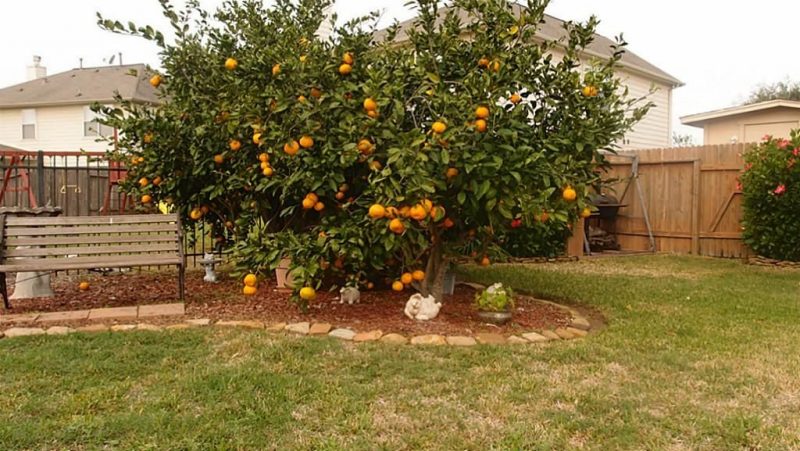


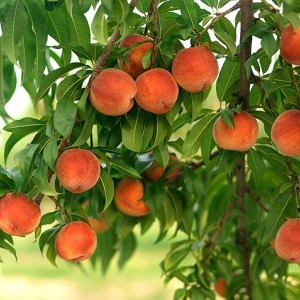
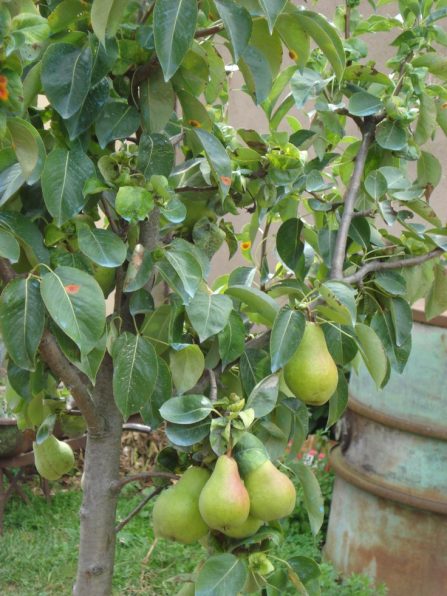
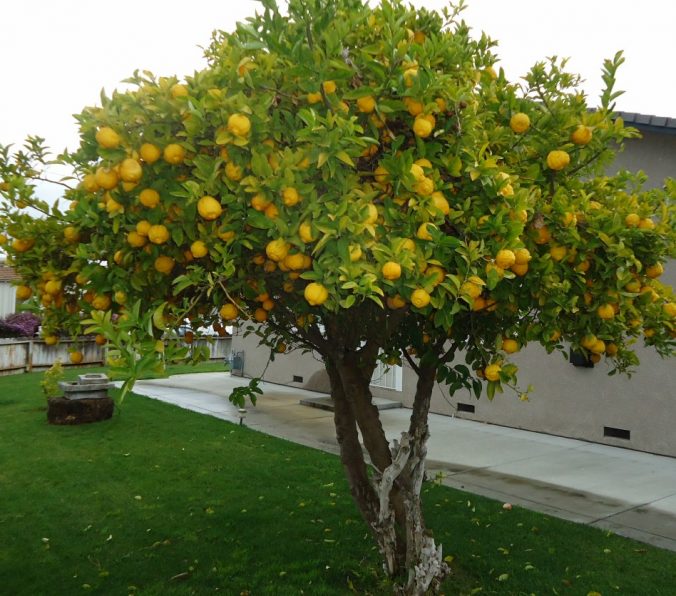
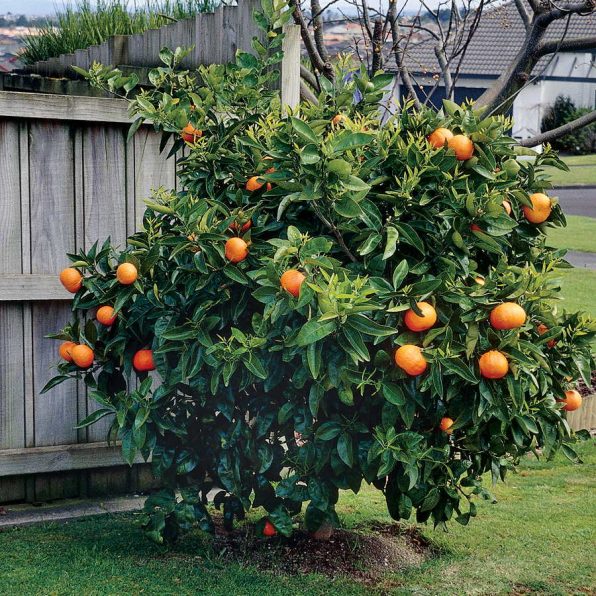

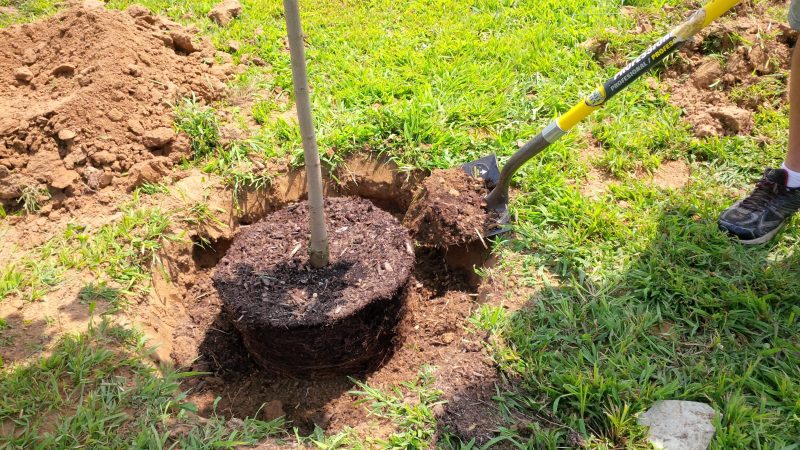




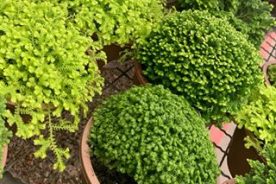

No Comments